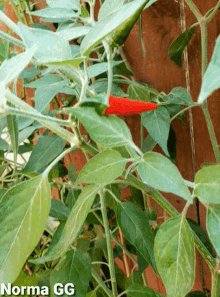Posted by: site admin @ 3:39 am
Lessons 4664 Sat 31 Dec 2022
Wise,Intelligent
people of All Major religions in the world of
ETERNAL,GLORIFIED,FRIENDLY,BENEVOLENT,COMPASSIONATE JAMBUDIPA UNIVERSE
grows vegetables 















 & Fruits
& Fruits 









 Plants
Plants  in pots
in pots  to live like free birds
to live like free birds  to overcome Hunger on Good Earth and SPACE.
to overcome Hunger on Good Earth and SPACE.
After
getting up at 3:45 AM take bath and do Buddhists Patanjali Yogic
and do Buddhists Patanjali Yogic
Meditation inhaling and exhaling in all positions of the body.
Do Meditative Mindful Swimming from 5 am to 6:30 AM
We were in
ETERNAL,GLORIFIED,FRIENDLY,BEN
We are in
ETERNAL,GLORIFIED,FRIENDLY,BEN
We continue to be in
ETERNAL,GLORIFIED,FRIENDLY,BEN






Ms
Mayawati declared that she will bring back the rule of Ashoka I.e., JAMBUDIPA. So far no leader ever dream’t of that.
Wise,Intelligent people of All Major religions in the world of
ETERNAL,GLORIFIED,FRIENDLY,BENEVOLENT,COMPASSIONATE JAMBUDIPA UNIVERSE wanted that to happen.
 ,Tibet, Africa,Eastern Europe,Western Germany
,Tibet, Africa,Eastern Europe,Western Germany  ,South Russia
,South Russia  ,Western Europe,Hungary
,Western Europe,Hungary  chitpavan brahmins of Rowdy Swayam Sevak slaves,stooges,boot lickers,chamchas,chelas are mad people.
chitpavan brahmins of Rowdy Swayam Sevak slaves,stooges,boot lickers,chamchas,chelas are mad people. murderer of democratic institutions gobbled the Master Key
murderer of democratic institutions gobbled the Master Key  by tampering the fraud EVMs, promised Rs 15 lakh in every citizen’s bank accounts,2 crore jobs for the youths,Tea
by tampering the fraud EVMs, promised Rs 15 lakh in every citizen’s bank accounts,2 crore jobs for the youths,Tea  & pakora stalls with drain water for unemployed youths, bhajans for malnutrition
& pakora stalls with drain water for unemployed youths, bhajans for malnutritionEternal,Glorified,Friendly,Benevolent,Compassionate
from
Hinduism,
Eternal,Glorified,Friendly,Benevolent,Compassionate
from
Christianity,
Eternal,Glorified,Friendly,Benevolent,Compassionate
from
Islam,
Eternal,Glorified,Friendly,Benevolent,Compassionate
from
Buddhism,
Eternal,Glorified,Friendly,Benevolent,Compassionate
from
Judaism,
Eternal,Glorified,Friendly,Benevolent,Compassionate
from
Taoism,
Eternal,Glorified,Friendly,Benevolent,Compassionate
from
Atheism,
Eternal,Glorified,Friendly,Benevolent,Compassionate
from
Sikhism,
Eternal,Glorified,Friendly,Benevolent,Compassionate
from
Mormonism
Awakened Ones practice JAMBUDIPA Natyam for Body & Mind to Attain
Eternal Bliss
dy
A Buddhist Meditation Practice
https://32parts.com/
This is a cool website, designed very nicely to easily understand Meditation on 32 Parts of Body.
https://www.wikihow.com/Plant-Vegetables
Grow Yams
 How to
How to
How to Plant Vegetables
A guide to preparing and planting thriving garden plots
Are you a first time gardener? Learning how to grow vegetables can be a
satisfying process that may pay off heftily at harvest time. To begin
the process, you need to learn how, where, and when to plant the
vegetables you want to grow. Planting vegetables requires some
pre-planning on your part, to insure that you start your plants off
right. In addition, planting vegetables requires two kinds of
investments: an investment of money for seeds or starts and soil
amendments, and an investment of the time it takes to prepare the soil,
plant the vegetables, and care for them as they grow.
Decide which veggies to plant. Research vegetables
that grow successfully in your area. Your location is one of the largest
factors in whether you will successfully grow vegetables. You need to
do a bit of research about your region and only decide on vegetables
that are compatible with the climate where you live. Looking up the
United States Department of Agriculture’s growing zones can give you a
start in learning about what plants grow well in your area.[1]
- Start out small. You may want to plant a ton of different vegetables
but if you are just starting out gardening you should really focus your
energy on just a few.[2]
Growing vegetables can be more of a time commitment than people expect, so begin gradually so you don’t get overwhelmed. - Once you are an experienced gardener, you may be able to replicate
the climate of other regions in order to grow any vegetables you like.
However, when you are just starting out, planting vegetables that are
difficult to grow in your region will most likely just be frustrating
and unfruitful.

This amount of sun is considered “full sun.” If you want to plant
a vegetable that does not require full sun all day, then you will need
to locate an area of your yard that gets a significant amount of shade.
- You do not necessarily have to plant vegetables directly in the
ground. Planting veggies in pots can be very successful for a wide
variety of plants and it does not require a lot of space.[4]
There are benefits to container gardening, for instance you can
easily move the plants to a new location if they are not happy where you
initially place them and the soil in the pot usually develops fewer
weeds. On the downside, however, plants in containers usually need to be
watered more often and are more vulnerable to cold and hot
temperatures, as a pot changes temperature much more easily than the
ground.
Vegetable starts, young plants that have been grown from seed in a
greenhouse by a professional, will cost you significantly more to buy,
but they will establish easier and can be planted later in the growing
season.
- Some plants are difficult to grow from seed. Plants with long
germination periods, such as cilantro, can be difficult for home
gardeners to cultivate. Consider investing in the added cost of
vegetable starts for plants such as this. - Many plants, including lettuce, are actually easier to grow from
seed. This is especially the case for plants, such as carrots, that
don’t do well with being transplanted. For plants like this, it makes
sense to sew the seeds directly into the ground or in biodegradable seed
starting pots that can go right into the ground once the plant sprouts.[6]

deciding when to plant your veggies will be dictated by whether you are
planting seeds or starts. In addition, different vegetables need to be
planted at different times of the year. There are many vegetables that
thrive in the summer sun, but you can also grow a surprising amount of
vegetables over the winter months, depending on your location.[7]
Preparing to Plant Your Vegetables
Download Article
-
1Buy seeds or veggie starts from a garden center. If
purchasing seeds, pick a brand that seems dependable and pick vegetable
strains that seem reliable. You may want to do some research before you
go to the garden center to decide exactly which type of each vegetable
you want. If you are purchasing vegetable starts, pick plants that seem
healthy and do not have discoloration or spots.
- Consider whether you want organic or non-GMO veggie starts or seeds.
While some people do not have a problem with genetic modification or
pesticides, others do not what these kind of processes involved in the
propagation of their food. It’s up to you. - You can also get good quality seeds and plants from springtime
farmer’s markets, seed swaps hosted by local organizations, and online
seed catalog companies.
- Consider whether you want organic or non-GMO veggie starts or seeds.
-
2Test the soil and purchase necessary amendments.
These amendments will depend on the current status of your soil and the
needs of the vegetables you want to plant. If you have never planted
before in the location you are using, take a soil sample and conduct a soil test.[8]
There are tests available at any garden center that will tell you
the ph of your soil. Soil can go from very acidic all the way to very
alkaline, as well as going from very sandy to very clay like. Figure out
what kind of soil you have and try to move it more toward neutral by
adding amendments.
- After assessing the soil, add some compost to it. Compost adds
organic matter that breaks down and basically becomes food for your
plant.
- After assessing the soil, add some compost to it. Compost adds
-
3Remove all of the weeds and vegetation where you are going to plant your vegetables.
Take the time to weed before you plant your veggies. Weeds will compete
for nutrients with your new plants, making their success less likely.
Get all the weeds from their roots, as many weeds can regenerate if even
a bit of their roots are left intact.
-
4Break up and amend the soil. You will want to
cultivate, or break up, the soil in an area a bit larger than where your
plants will actually be. The root systems of many plants will grow to
be quite large, moving outward from where the plant is initially
planted. You can break the soil up by digging with a shovel or using a
roto-tiller. As you mix the soil, add in any amendments you need to add
based on the results from your soil test.
-
1Dig a hole and place seeds or a vegetable start in it.
Be sure to follow any directions on seed packets about how deep and how
far apart you should plant seeds. Some seeds can easily grow from a
depth of 6 inches, while others need to basically be on the surface of
the soil. Vegetable starts, on the other hand, should be planted so that
their existing soil is level with the surface.
- Remember that some plants can only grow in one direction,
meaning that a certain part of the seed or clove needs to be facing up
in order for it to grow properly. For instance, garlic cloves have a top
and bottom. When planting garlic you need to face the pointy side up in
order for it to grow.[9]
- Remember that some plants can only grow in one direction,
-
2Cover the hole back up with soil. If you are using
seeds, pack the soil back in the hole, making sure that it is firm but
not totally compacted. If you are planting vegetable starts, push soil
in all around the start, pressing the soil firmly so that the start
stands firmly upright.
-
3Water your vegetables. The first time you water, you
will want to soak the entire area. After that, keep the soil moist but
don’t drown the plants. Keeping up on watering is one of the most
important things you can do to make your vegetables thrive. Monitor your
plants and soil and adjust your watering schedule accordingly.
- If you are starting plants from seeds outdoors, keep the water
consistently moist until the plants come up. As they grow, you can
reduce the watering frequency to once or twice per week.
- If you are starting plants from seeds outdoors, keep the water
-
4Care for your veggies after planting. Don’t just
forget about them, or they won’t grow very well. Remove any weeds that
pop up, fertilize if necessary, and keep on watering.[10]
You will need to keep tending to your veggies but once they are planted properly, much of your work is done!
- To deter weeds from growing, consider mulching around your veggies.[11]
The little bit of effort it takes to mulch will pay off when you are not repeatedly weeding around your plants. - Some vegetable plants need to be fertilized during the growing
season to ensure harvest because they absorb large amounts of nutrients
from the soil. Make sure that you’re aware of your plants’ specific
feeding requirements.
- To deter weeds from growing, consider mulching around your veggies.[11]
At
present, the EC’s VVPAT auditing is restricted to one randomly chosen
polling booth per constituency. In a recent essay, K. Ashok Vardhan
Shetty , a former IAS officer, demonstrates that this sample size will
fail to detect faulty EVMs 98-99% of the time. He also shows that VVPATs
can be an effective deterrent to fraud only on the condition that the
detection of even one faulty EVM in a constituency must entail the VVPAT
hand-counting of all the EVMs in that constituency. Without this
proviso, VVPATs would merely provide the sheen of integrity without its
substance.
The third criterion is secrecy. Here too, EVMs
disappoint. With the paper ballot, the EC could mix ballot papers from
different booths before counting, so that voting preferences could not
be connected to a given locality. But with EVMs, we are back to
booth-wise counting, which allows one to discern voting patterns and
renders marginalised communities vulnerable to pressure. Totaliser
machines can remedy this, but the EC has shown no intent to adopt them.
So,
on all three counts — transparency, verifiability and secrecy — EVMs
are flawed. VVPATs are not the answer either, given the sheer magnitude
of the logistical challenges. The recent track record of EVMs indicates
that the number of malfunctions in a national election will be high. For
that very reason, the EC is unlikely to adopt a policy of hand-counting
all EVMs in constituencies where faulty machines are reported, as this
might entail hand-counting on a scale that defeats the very purpose of
EVMs. And yet, this is a principle without which the use of VVPATs is
meaningless.
Unjustified suspicions
Despite these issues, EVMs
continue to enjoy the confidence of the EC, which insists that Indian
EVMs, unlike the Western ones, are tamper-proof. But this is a matter of
trust. Even if the software has been burnt into the microchip, neither
the EC nor the voter knows for sure what software is running in a
particular EVM. One has to simply trust the manufacturer and the EC. But
as the German court observed, the precondition of this trust is the
verifiability of election events, whereas in the case of EVMs, “the
calculation of the election result is based on a calculation act which
cannot be examined from outside”.
While it is true that the
results come quicker and the process is cheaper with EVMs as compared to
paper ballot, both these considerations are undeniably secondary to the
integrity of the election. Another argument made in favour of the EVM
is that it eliminates malpractices such as booth-capturing and
ballot-box stuffing. In the age of the smartphone, however, the
opportunity costs of ballot-box-stuffing and the risk of exposure are
prohibitively high. In contrast, tampering with code could accomplish
rigging on a scale unimaginable for booth-capturers. Moreover, it is
nearly impossible to detect EVM-tampering. As a result, suspicions of
tampering in the tallying of votes — as opposed to malfunction in
registering the votes, which alone is detectable — are destined to
remain in the realm of speculation. The absence of proven fraud might
save the EVM for now, but its survival comes at a dangerous cost — the
corrosion of people’s faith in the electoral process.
Yet there
doesn’t have to be incontrovertible evidence of EVM-tampering for a
nation to return to paper ballot. Suspicion is enough, and there is
enough of it already. As the German court put it, “The democratic
legitimacy of the election demands that the election events be
controllable so that… unjustified suspicion can be refuted.” The
phrase “unjustified suspicion” is pertinent. The EC has always
maintained that suspicions against EVMs are unjustified. Clearly, the
solution is not to dismiss EVM-sceptics as ignorant technophobes.
Rather, the EC is obliged to provide the people of India a polling
process capable of refuting unjustified suspicion, as this is a basic
requirement for democratic legitimacy, not an optional accessory.
sampath.g@thehindu.co.in
Jagatheesan Chandrasekharan, [Dec 30, 2022 at 9:05 AM]
A
/ One cannot describe Bhakti movement in a single category. The Bhakti
movement has several aspects. On the one side, there was dissent against
the established order of things in relation to the Vedic practice. At
the same time, there was considerable conformism to the Puranic kind of
religion. If you look at the songs of these saints — Saiva Nayanars and
Vaishnava Alwars — most of them are addressed to Puranic deities, who
are consecrated at temples.
A / In a paper which I along with my
Professor M.G.S. Narayanan published some 45 years ago, we argued that
the Bhakti movement was propagation of the temple cult, which meant the
propagation of the kind of ideology represented by the landed magnates
who were managing the temples. So, a new social formation was coming
into existence and this was the ideological justification for that. The
Bhakti movement was not this or that but it was this, that and the
others. You cannot give a single explanation for the movement. But the
Bhakti movement further developed more conformists. Brahminical
orthodoxy is also the child of Bhakti movement. What began by breaking
fences eventually ended up building walls.
Q / What is your view on
the argument that the writing of the history of India should start from
the south and not from the north?
A / This question comes only when
you accept the notion of India. If you accept the notion of India, you
could ask whether it should start from north India or south India. When
does this notion of India come into existence? Let us say in the 19th
century, with the Indian national movement during the British rule.
Before that, there was no India. Then, what Indian history are you
talking about?
LESSONS
from
Rector
JC


At
present, the EC’s VVPAT auditing is restricted to one randomly chosen
polling booth per constituency. In a recent essay, K. Ashok Vardhan
Shetty , a former IAS officer, demonstrates that this sample size will
fail to detect faulty EVMs 98-99% of the time. He also shows that VVPATs
can be an effective deterrent to fraud only on the condition that the
detection of even one faulty EVM in a constituency must entail the VVPAT
hand-counting of all the EVMs in that constituency. Without this
proviso, VVPATs would merely provide the sheen of integrity without its
substance.
The third criterion is secrecy. Here too, EVMs
disappoint. With the paper ballot, the EC could mix ballot papers from
different booths before counting, so that voting preferences could not
be connected to a given locality. But with EVMs, we are back to
booth-wise counting, which allows one to discern voting patterns and
renders marginalised communities vulnerable to pressure. Totaliser
machines can remedy this, but the EC has shown no intent to adopt them.
So,
on all three counts — transparency, verifiability and secrecy — EVMs
are flawed. VVPATs are not the answer either, given the sheer magnitude
of the logistical challenges. The recent track record of EVMs indicates
that the number of malfunctions in a national election will be high. For
that very reason, the EC is unlikely to adopt a policy of hand-counting
all EVMs in constituencies where faulty machines are reported, as this
might entail hand-counting on a scale that defeats the very purpose of
EVMs. And yet, this is a principle without which the use of VVPATs is
meaningless.
Unjustified suspicions
Despite these issues, EVMs
continue to enjoy the confidence of the EC, which insists that Indian
EVMs, unlike the Western ones, are tamper-proof. But this is a matter of
trust. Even if the software has been burnt into the microchip, neither
the EC nor the voter knows for sure what software is running in a
particular EVM. One has to simply trust the manufacturer and the EC. But
as the German court observed, the precondition of this trust is the
verifiability of election events, whereas in the case of EVMs, “the
calculation of the election result is based on a calculation act which
cannot be examined from outside”.
While it is true that the
results come quicker and the process is cheaper with EVMs as compared to
paper ballot, both these considerations are undeniably secondary to the
integrity of the election. Another argument made in favour of the EVM
is that it eliminates malpractices such as booth-capturing and
ballot-box stuffing. In the age of the smartphone, however, the
opportunity costs of ballot-box-stuffing and the risk of exposure are
prohibitively high. In contrast, tampering with code could accomplish
rigging on a scale unimaginable for booth-capturers. Moreover, it is
nearly impossible to detect EVM-tampering. As a result, suspicions of
tampering in the tallying of votes — as opposed to malfunction in
registering the votes, which alone is detectable — are destined to
remain in the realm of speculation. The absence of proven fraud might
save the EVM for now, but its survival comes at a dangerous cost — the
corrosion of people’s faith in the electoral process.
Yet there
doesn’t have to be incontrovertible evidence of EVM-tampering for a
nation to return to paper ballot. Suspicion is enough, and there is
enough of it already. As the German court put it, “The democratic
legitimacy of the election demands that the election events be
controllable so that… unjustified suspicion can be refuted.” The
phrase “unjustified suspicion” is pertinent. The EC has always
maintained that suspicions against EVMs are unjustified. Clearly, the
solution is not to dismiss EVM-sceptics as ignorant technophobes.
Rather, the EC is obliged to provide the people of India a polling
process capable of refuting unjustified suspicion, as this is a basic
requirement for democratic legitimacy, not an optional accessory.
sampath.g@thehindu.co.in
Jagatheesan Chandrasekharan, [Dec 30, 2022 at 9:05 AM]
A
/ One cannot describe Bhakti movement in a single category. The Bhakti
movement has several aspects. On the one side, there was dissent against
the established order of things in relation to the Vedic practice. At
the same time, there was considerable conformism to the Puranic kind of
religion. If you look at the songs of these saints — Saiva Nayanars and
Vaishnava Alwars — most of them are addressed to Puranic deities, who
are consecrated at temples.
A / In a paper which I along with my
Professor M.G.S. Narayanan published some 45 years ago, we argued that
the Bhakti movement was propagation of the temple cult, which meant the
propagation of the kind of ideology represented by the landed magnates
who were managing the temples. So, a new social formation was coming
into existence and this was the ideological justification for that. The
Bhakti movement was not this or that but it was this, that and the
others. You cannot give a single explanation for the movement. But the
Bhakti movement further developed more conformists. Brahminical
orthodoxy is also the child of Bhakti movement. What began by breaking
fences eventually ended up building walls.
Q / What is your view on
the argument that the writing of the history of India should start from
the south and not from the north?
A / This question comes only when
you accept the notion of India. If you accept the notion of India, you
could ask whether it should start from north India or south India. When
does this notion of India come into existence? Let us say in the 19th
century, with the Indian national movement during the British rule.
Before that, there was no India. Then, what Indian history are you
talking about?
Rector
JC

When
a just born baby is kept isolated without anyone communicating with the
baby, after a few days it will speak and human natural (Prakrit)
language known as Classical Eternal,Glorified,Friendly,Benevolent,Compassionate Magahi Magadhi/
Eternal,Glorified,Friendly,Benevolent,Compassionate Magadhi. All
the 7,139 languages and dialects are off shoot of Classical ETERNAL AND
Eternal,Glorified,Friendly,Benevolent,Compassionate Magahi Magadhi. Hence all
of them are Classical Eternal,Glorified,Friendly,Benevolent,Compassionate in nature (Prakrit) of Human Beings, just like all other
living speices have their own natural
languages for communication. 138 languages are translated by
01) Classical Eternal,Glorified,Friendly,Benevolent,Compassionate Magahi Magadhi,
02) Classical Eternal,Glorified,Friendly,Benevolent,Compassionate Chandaso language,
03) Classical Eternal,Glorified,Friendly,Benevolent,Compassionate Magadhi Prakrit,
04) Classical Classical Eternal,Glorified,Friendly,Benevolent,Compassionate Hela Basa (Hela Language),
05) Classical Eternal,Glorified,Friendly,Benevolent,Compassionate Classical Pāḷi
06)Classical Classical Eternal,Glorified,Friendly,Benevolent,Compassionate Devanagari,Classical Hindi-Devanagari- शास्त्रीय हिंदी,
07) Classical Eternal,Glorified,Friendly,Benevolent,Compassionate Cyrillic
08) Classical Eternal,Glorified,Friendly,Benevolent,Compassionate Afrikaans– Klassieke Afrikaans
09) Classical Eternal,Glorified,Friendly,Benevolent,Compassionate Albanian-Shqiptare klasike,
10) Classical Eternal,Glorified,Friendly,Benevolent,Compassionate Amharic-አንጋፋዊ አማርኛ,
11) Classical Eternal,Glorified,Friendly,Benevolent,Compassionate Arabic-اللغة العربية الفصحى
12) Classical Eternal,Glorified,Friendly,Benevolent,Compassionate Armenian-դասական հայերեն,
13) Classical Eternal,Glorified,Friendly,Benevolent,Compassionate Assamese-ধ্ৰুপদী অসমীয়া
14) Classical Eternal,Glorified,Friendly,Benevolent,Compassionate Aymara 14) Aymara clásico
15) Classical Eternal,Glorified,Friendly,Benevolent,Compassionate Azerbaijani- Klassik Azərbaycan,
16)Classical Eternal,Glorified,Friendly,Benevolent,Compassionate
Basque- Euskal klasikoa,16) Euskara klasikoa- Euskal klasikoa,
17)Classical Eternal,Glorified,Friendly,Benevolent,Compassionate Belarusian-Класічная беларуская,17) Класічная беларуска-класічная
беларуская,
18) Classical Eternal,Glorified,Friendly,Benevolent,Compassionate Bengali-ক্লাসিক্যাল বাংলা,18) ধ্রুপদী বাংলা-ক্লাস বাংলা
20) Classical Eternal,Glorified,Friendly,Benevolent,Compassionate शास्त्रीय भोजपुरी के बाBosnian-Klasični bosanski,20) Klasični bosanski-Klasični bosansk
21)Classical Classical Eternal,Glorified,Friendly,Benevolent,Compassionate Bulgarian
22) Classical Classical Eternal,Glorified,Friendly,Benevolent,CompassionateCatalan-Català clàssic
23) Classical Classical Eternal,Glorified,Friendly,Benevolent,Compassionate Cebuano-Klase sa Sugbo,
24) Classical Classical Eternal,Glorified,Friendly,Benevolent,Compassionate Chichewa-Chikale cha Chichewa,
25) Classical Classical Eternal,Glorified,Friendly,Benevolent,Compassionate Chinese (Simplified)-古典中文(简体),
26) Classical Classical Eternal,Glorified,Friendly,Benevolent,Compassionate Chinese (Traditional)-古典中文(繁體),
27) Classical Classical Eternal,Glorified,Friendly,Benevolent,Compassionate Corsican-Corsa Corsicana,
28) Classical Classical Eternal,Glorified,Friendly,Benevolent,Compassionate Croatian-Klasična hrvatska,
29)Classical Classical Eternal,Glorified,Friendly,Benevolent,Compassionate Czech-Klasická čeština
30) Classical ETERNAL AND GLORIFIED FRIENDLY BENEVOLENT COMPASSIONATE Danish-Klassisk dansk,Klassisk dansk,
31) Classical ETERNAL AND GLORIFIED FRIENDLY BENEVOLENT COMPASSIONATE Dhivehi,31) ކްލާސިކަލް ދިވެހި
32) Classical ETERNAL AND GLORIFIED FRIENDLY BENEVOLENT COMPASSIONATE Dogri, 32) शास्त्रीय डोगरी
33) Classical ETERNAL AND GLORIFIED FRIENDLY BENEVOLENT COMPASSIONATE Dutch- Klassiek Nederlands,
34) Classical ETERNAL AND GLORIFIED FRIENDLY BENEVOLENT COMPASSIONATE English,Roman,
35) Classical ETERNAL AND GLORIFIED FRIENDLY BENEVOLENT COMPASSIONATE Esperanto-Klasika Esperanto,
36) Classical ETERNAL AND GLORIFIED FRIENDLY BENEVOLENT COMPASSIONATE Estonian- klassikaline eesti keel,
37) Classical ETERNAL AND GLORIFIED FRIENDLY BENEVOLENT COMPASSIONATE Ewe,37) Klasik Ewe
38) Classical ETERNAL AND GLORIFIED FRIENDLY BENEVOLENT COMPASSIONATE Filipino klassikaline filipiinlane,
39) Classical ETERNAL AND GLORIFIED FRIENDLY BENEVOLENT COMPASSIONATE Finnish- Klassinen suomalainen,
40) Classical ETERNAL AND GLORIFIED FRIENDLY BENEVOLENT COMPASSIONATE French- Français classique,
41) Classical ETERNAL AND GLORIFIED FRIENDLY BENEVOLENT COMPASSIONATE Frisian- Klassike Frysk,
42) Classical ETERNAL AND GLORIFIED FRIENDLY BENEVOLENT COMPASSIONATE Galician-Clásico galego,
43) Classical ETERNAL AND GLORIFIED FRIENDLY BENEVOLENT COMPASSIONATE Georgian-კლასიკური ქართული,
45) Classical ETERNAL AND GLORIFIED FRIENDLY BENEVOLENT COMPASSIONATE German- Klassisches Deutsch,
45) Classical ETERNAL AND GLORIFIED FRIENDLY BENEVOLENT COMPASSIONATEGreek-Κλασσικά Ελληνικά,
46) Classical ETERNAL AND GLORIFIED FRIENDLY BENEVOLENT COMPASSIONATE Guarani,46) Guaraní clásico
47) Classical ETERNAL AND GLORIFIED FRIENDLY BENEVOLENT COMPASSIONATE Gujarati-ક્લાસિકલ ગુજરાતી,
48) Classical ETERNAL AND GLORIFIED FRIENDLY BENEVOLENT COMPASSIONATE Haitian Creole-Klasik kreyòl,
49) Classical ETERNAL AND GLORIFIED FRIENDLY BENEVOLENT COMPASSIONATE Hausa-Hausa Hausa,
50) Classical ETERNAL AND GLORIFIED FRIENDLY BENEVOLENT COMPASSIONATE Hawaiian-Hawaiian Hawaiian,
51) Classical ETERNAL AND GLORIFIED FRIENDLY BENEVOLENT COMPASSIONATE Hebrew- עברית קלאסית
52) Classical ETERNAL AND GLORIFIED FRIENDLY BENEVOLENT COMPASSIONATE Hmong- Lus Hmoob,
53) Classical ETERNAL AND GLORIFIED FRIENDLY BENEVOLENT COMPASSIONATE Hungarian-Klasszikus magyar,
54) Classical ETERNAL AND GLORIFIED FRIENDLY BENEVOLENT COMPASSIONATE Icelandic-Klassísk íslensku,
55) Classical ETERNAL AND GLORIFIED FRIENDLY BENEVOLENT COMPASSIONATE Igbo,Klassískt Igbo,
56) Classical ETERNAL AND GLORIFIED FRIENDLY BENEVOLENT COMPASSIONATE Ilocano,56) Klasiko nga Ilocano
57)Classical ETERNAL AND GLORIFIED FRIENDLY BENEVOLENT COMPASSIONATE Indonesian-Bahasa Indonesia Klasik,
58) Classical ETERNAL AND GLORIFIED FRIENDLY BENEVOLENT COMPASSIONATE Irish-Indinéisis Clasaiceach,
59) Classical ETERNAL AND GLORIFIED FRIENDLY BENEVOLENT COMPASSIONATE Italian-Italiano classico,
60) Classical ETERNAL AND GLORIFIED FRIENDLY BENEVOLENT COMPASSIONATE Japanese-古典的なイタリア語,
61) Classical ETERNAL AND GLORIFIED FRIENDLY BENEVOLENT COMPASSIONATE Javanese-Klasik Jawa,
62) Classical ETERNAL AND GLORIFIED FRIENDLY BENEVOLENT COMPASSIONATE Kannada- ಶಾಸ್ತ್ರೀಯ ಕನ್ನಡ,
63) Classical ETERNAL AND GLORIFIED FRIENDLY BENEVOLENT COMPASSIONATE Kazakh-Классикалық қазақ,
64) Classical ETERNAL AND GLORIFIED FRIENDLY BENEVOLENT COMPASSIONATE Khmer- ខ្មែរបុរាណ,
65) Classical ETERNAL AND GLORIFIED FRIENDLY BENEVOLENT COMPASSIONATE Kinyarwanda
66) Classical ETERNAL AND GLORIFIED FRIENDLY BENEVOLENT COMPASSIONATE Konkani,66) शास्त्रीय कोंकणी
67) Classical ETERNAL AND GLORIFIED FRIENDLY BENEVOLENT COMPASSIONATE Korean-고전 한국어,
68) Classical Krio,ETERNAL AND GLORIFIED FRIENDLY BENEVOLENT COMPASSIONATE 68) Krio we dɛn kɔl Krio
69) Classical ETERNAL AND GLORIFIED FRIENDLY BENEVOLENT COMPASSIONATE Kurdish (Kurmanji)-Kurdî (Kurmancî),
70) Classical ETERNAL AND GLORIFIED FRIENDLY BENEVOLENT COMPASSIONATE Kyrgyz-Классикалык Кыргыз,
71) Classical ETERNAL AND GLORIFIED FRIENDLY BENEVOLENT COMPASSIONATE Lao-ຄລາສສິກລາວ,
72) Classical ETERNAL AND GLORIFIED FRIENDLY BENEVOLENT COMPASSIONATE Latin-LXII) Classical Latin,
73) Classical ETERNAL AND GLORIFIED FRIENDLY BENEVOLENT COMPASSIONATE Latvian-Klasiskā latviešu valoda,
74) Classical ETERNAL AND GLORIFIED FRIENDLY BENEVOLENT COMPASSIONATE Lingala,74) Lingala ya kala,
75) Classical ETERNAL AND GLORIFIED FRIENDLY BENEVOLENT COMPASSIONATE Lithuanian-Klasikinė lietuvių kalba,
76) Classical ETERNAL AND GLORIFIED FRIENDLY BENEVOLENT COMPASSIONATE Luganda,76) Oluganda olw’edda
77) Classical ETERNAL AND GLORIFIED FRIENDLY BENEVOLENT COMPASSIONATE Luganda,77) Oluganda olw’edda
78) Classical ETERNAL AND GLORIFIED FRIENDLY BENEVOLENT COMPASSIONATE Luxembourgish-Klassesch Lëtzebuergesch,
79)Classical ETERNAL AND GLORIFIED FRIENDLY BENEVOLENT COMPASSIONATE Macedonian-Класичен македонски,
80)Classical ETERNAL AND GLORIFIED FRIENDLY BENEVOLENT COMPASSIONATE Maithili,80) शास्त्रीय मैथिली
81) Classical ETERNAL AND GLORIFIED FRIENDLY BENEVOLENT COMPASSIONATE Malagasy,класичен малгашки,
82) Classical ETERNAL AND GLORIFIED FRIENDLY BENEVOLENT COMPASSIONATE Malay-Melayu Klasik,
83) Classical ETERNAL AND GLORIFIED FRIENDLY BENEVOLENT COMPASSIONATE Malayalam-ക്ലാസിക്കൽ മലയാളം,
84) Classical ETERNAL AND GLORIFIED FRIENDLY BENEVOLENT COMPASSIONATE Maltese-Klassiku Malti,
85) Classical ETERNAL AND GLORIFIED FRIENDLY BENEVOLENT COMPASSIONATE Maori-Maori Maori,
86) Classical ETERNAL AND GLORIFIED FRIENDLY BENEVOLENT COMPASSIONATE Marathi-क्लासिकल माओरी,
87) Classical ETERNAL AND GLORIFIED FRIENDLY BENEVOLENT COMPASSIONATE Meiteilon (Manipuri),꯹꯰) ꯀ꯭ꯂꯥꯁꯤꯀꯦꯜ ꯃꯦꯏꯇꯦꯏꯂꯣꯟ (ꯃꯅꯤꯄꯨꯔꯤ) ꯴.
88) Classical ETERNAL AND GLORIFIED FRIENDLY BENEVOLENT COMPASSIONATE Mizo,88) Classical Mizo a ni
89) Classical ETERNAL AND GLORIFIED FRIENDLY BENEVOLENT COMPASSIONATE Mongolian-Сонгодог Монгол,
90) Classical ETERNAL AND GLORIFIED FRIENDLY BENEVOLENT COMPASSIONATE Myanmar (Burmese)-Classical မြန်မာ (ဗမာ),
91) Classical ETERNAL AND GLORIFIED FRIENDLY BENEVOLENT COMPASSIONATE Nepali-शास्त्रीय म्यांमार (बर्मा),
92) Classical ETERNAL AND GLORIFIED FRIENDLY BENEVOLENT COMPASSIONATE Norwegian-Klassisk norsk,
93) Classical ETERNAL AND GLORIFIED FRIENDLY BENEVOLENT COMPASSIONATE Odia (Oriya)
94) Classical ETERNAL AND GLORIFIED FRIENDLY BENEVOLENT COMPASSIONATE Oromo,94) Afaan Oromoo Kilaasikaa
95) Classical ETERNAL AND GLORIFIED FRIENDLY BENEVOLENT COMPASSIONATE Pashto- ټولګی پښتو
96) Classical ETERNAL AND GLORIFIED FRIENDLY BENEVOLENT COMPASSIONATE Persian-کلاسیک فارسی
97)Classical ETERNAL AND GLORIFIED FRIENDLY BENEVOLENT COMPASSIONATE Polish-Język klasyczny polski,
98) Classical ETERNAL AND GLORIFIED FRIENDLY BENEVOLENT COMPASSIONATE Portuguese-Português Clássico,
99) Classical ETERNAL AND GLORIFIED FRIENDLY BENEVOLENT COMPASSIONATE Punjabi-ਕਲਾਸੀਕਲ ਪੰਜਾਬੀ,
100) Classical ETERNAL AND GLORIFIED FRIENDLY BENEVOLENT COMPASSIONATE Quechua,100) Quechua clásico
101) Classical ETERNAL AND GLORIFIED FRIENDLY BENEVOLENT COMPASSIONATE Romanian-Clasic românesc,
102) Classical ETERNAL AND GLORIFIED FRIENDLY BENEVOLENT COMPASSIONATE Russian-Классический русский,
103) Classical ETERNAL AND GLORIFIED FRIENDLY BENEVOLENT COMPASSIONATE Samoan-Samoan Samoa
104) Classical ETERNAL AND GLORIFIED FRIENDLY BENEVOLENT COMPASSIONATE Sanskrit छ्लस्सिचल् षन्स्क्रित्
105) Classical ETERNAL AND GLORIFIED FRIENDLY BENEVOLENT COMPASSIONATE Scots Gaelic-Gàidhlig Albannach Clasaigeach,
106)Classical ETERNAL AND GLORIFIED FRIENDLY BENEVOLENT COMPASSIONATE Sepedi,106) Sepedi sa Kgale
107) Classical ETERNAL AND GLORIFIED FRIENDLY BENEVOLENT COMPASSIONATE Serbian-Класични српски,
108) Classical ETERNAL AND GLORIFIED FRIENDLY BENEVOLENT COMPASSIONATE Sesotho-Seserbia ea boholo-holo,
109) Classical ETERNAL AND GLORIFIED FRIENDLY BENEVOLENT COMPASSIONATE Shona-Shona Shona,
110) Classical ETERNAL AND GLORIFIED FRIENDLY BENEVOLENT COMPASSIONATE Sindhi,
111)Classical ETERNAL AND GLORIFIED FRIENDLY BENEVOLENT COMPASSIONATE Sinhala-සම්භාව්ය සිංහල,
112) Classical ETERNAL AND GLORIFIED FRIENDLY BENEVOLENT COMPASSIONATE Slovak-Klasický slovenský,
113) Classical ETERNAL AND GLORIFIED FRIENDLY BENEVOLENT COMPASSIONATE Slovenian-Klasična slovenska,
114) Classical ETERNAL AND GLORIFIED FRIENDLY BENEVOLENT COMPASSIONATE Somali-Soomaali qowmiyadeed,
115) Classical ETERNAL AND GLORIFIED FRIENDLY BENEVOLENT COMPASSIONATE Spanish-Español clásico,
116) Classical ETERNAL AND GLORIFIED FRIENDLY BENEVOLENT COMPASSIONATE Sundanese-Sunda Klasik,
117) Classical ETERNAL AND GLORIFIED FRIENDLY BENEVOLENT COMPASSIONATE Swahili,Kiswahili cha Classical,
118) Classical ETERNAL AND GLORIFIED FRIENDLY BENEVOLENT COMPASSIONATE Swedish-Klassisk svensk,
119) Classical ETERNAL AND GLORIFIED FRIENDLY BENEVOLENT COMPASSIONATE Tajik-тоҷикӣ классикӣ,
120) Classical ETERNAL AND GLORIFIED FRIENDLY BENEVOLENT COMPASSIONATE Tamil-பாரம்பரிய இசைத்தமிழ் செம்மொழி,
121) Classical ETERNAL AND GLORIFIED FRIENDLY BENEVOLENT COMPASSIONATE Tatar
122) Classical ETERNAL AND GLORIFIED FRIENDLY BENEVOLENT COMPASSIONATE Telugu- క్లాసికల్ తెలుగు,
123) Classical ETERNAL AND GLORIFIED FRIENDLY BENEVOLENT COMPASSIONATE Thai-ภาษาไทยคลาสสิก,
124) Classical ETERNAL AND GLORIFIED FRIENDLY BENEVOLENT COMPASSIONATE Tigrinya,124) ክላሲካል ትግርኛ
125) Classical ETERNAL AND GLORIFIED FRIENDLY BENEVOLENT COMPASSIONATE Tsonga,125) Xitsonga xa xikhale
126) Classical ETERNAL AND GLORIFIED FRIENDLY BENEVOLENT COMPASSIONATE Turkish-Klasik Türk,
127)Classical ETERNAL AND GLORIFIED FRIENDLY BENEVOLENT COMPASSIONATE Turkmen
128) Classical ETERNAL AND GLORIFIED FRIENDLY BENEVOLENT COMPASSIONATE Twi,128) Twi a wɔde di dwuma wɔ tete mmere mu
129)Classical ETERNAL AND GLORIFIED FRIENDLY BENEVOLENT COMPASSIONATE Ukrainian-Класичний український,
130) Classical ETERNAL AND GLORIFIED FRIENDLY BENEVOLENT COMPASSIONATE Urdu- کلاسیکی اردو
131) Classical ETERNAL AND GLORIFIED FRIENDLY BENEVOLENT COMPASSIONATE Uyghur,
132) Classical ETERNAL AND GLORIFIED FRIENDLY BENEVOLENT COMPASSIONATE Uzbek-Klassik o’z,
133) Classical ETERNAL AND GLORIFIED FRIENDLY BENEVOLENT COMPASSIONATE Vietnamese-Tiếng Việ,
134) Classical ETERNAL AND GLORIFIED FRIENDLY BENEVOLENT COMPASSIONATE Welsh-Cymraeg Clasurol,
135) Classical ETERNAL AND GLORIFIED FRIENDLY BENEVOLENT COMPASSIONATEXhosa-IsiXhosa zesiXhosa,
136) Classical ETERNAL AND GLORIFIED FRIENDLY BENEVOLENT COMPASSIONATE Yiddish- קלאסישע ייִדיש
137) Classical ETERNAL AND GLORIFIED FRIENDLY BENEVOLENT COMPASSIONATE Yoruba-Yoruba Yoruba,
138) Classical ETERNAL AND GLORIFIED FRIENDLY BENEVOLENT COMPASSIONATE Zulu-I-Classical Zulu


 How to
How to How to
How to














